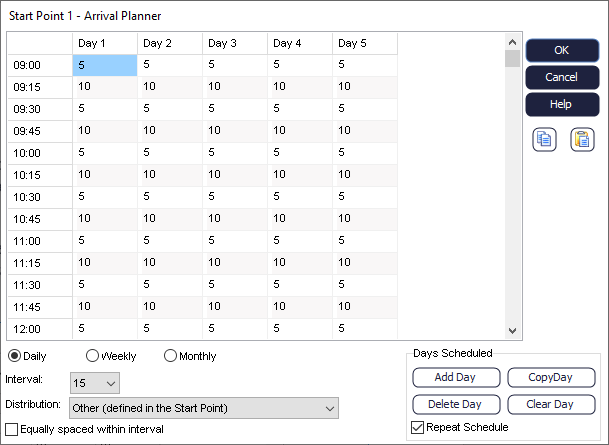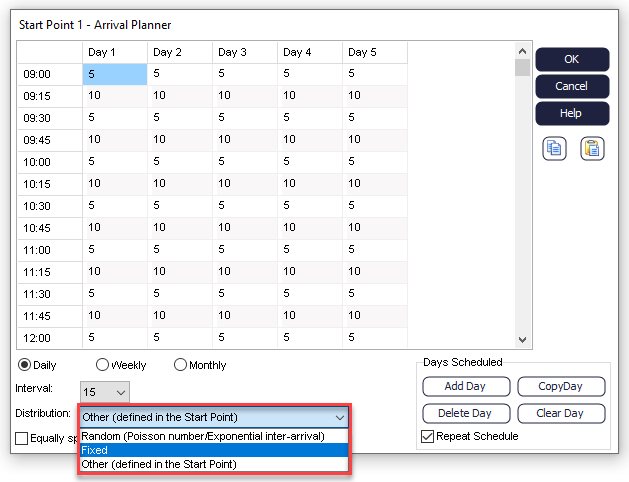Arrival Planner
The Arrival Planner allows you define the number of Work Items you want to enter the process by hour of the day and day of the week. You can also include arrivals by week and month as well as change the interval lengths.
The arrival times and volume of items arriving are specified in a table of data. This data is also stored in an internal Simul8 spreadsheet, giving you flexibility to control it through Visual Logic at run time if needed.
The Arrival Planner can be accessed by selecting a Start Point and selecting the Additional Tab. This allows you to easily control the number of arrivals by a chosen time frame.

The Interface
Time Frame: There are three timeframe options to select from
- Daily - control daily arrivals by minute intervals
- Weekly - control weekly arrivals by daily intervals
- Monthly - control monthly arrivals by weekly intervals
The timeframe chosen will automatically update the table with predefined inputs.
Main Table: By default, the Arrival Planner timeframe is set to Daily, with 15-minute intervals. The numbers of days are dependent on the number of days that have been defined in clock settings. The start and end time is also set according to the start and end time defined in clock settings. The Arrival Planner inputs are the number of Work Items that will arrive between the intervals specified.
The Arrival Planner can be changed by selecting a cell and entering the number of arrivals you wish; this must be a number.
Interval: Use this to define the intervals you wish to control your arrivals by, Simul8 lists the available intervals which are those that are divisible by the run time. NOTE - the interval is only enabled if using the Daily timeframe, otherwise is automatically calculated based on the defined clock settings.
Distribution: Use this to define what distribution you want to apply to the arrivals; this will be applied to all arrival intervals. You can select from Random, Fixed or Other, if you wish to use the other option you must define what distribution you want on the Start Point.

Equally Split Arrivals: This will ensure that the arrivals at each interval are split equally over that time.
Repeat Schedule: Check this if you have defined a results collection period longer than the number of days shown and wish your arrival pattern to repeat. If unchecked this will be populated with the total number of days in the results collection period.